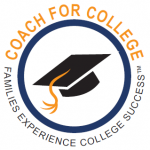Merit Aid / Grants That You Don’t Pay Back
Academics Are Important But Other Strategies Can Apply
Merit Aid | Grant Awards are awarded by Colleges as college free money to students who achieve certain “merit standards” that the respective college deems valuable to attract the student to attend the school.
And of course in the competitive nature of colleges chasing rankings, certain merit criteria becomes valuable to the college in that ranking process.
In addition students who qualify for this type of financial aid often times are good contributors to the student community.
But many families miss out because they think they won’t qualify for free money. Unfortnately this is another example where the misinformed increase their opportunity costs when going to college.
Some strategies don’t even consider grades / test scores.
Institutional grants (by the college) often occur as a result of attracting the student to enroll in a respective college…remembers, colleges are competing for students for a variety of reasons.
Actual Merit Aid / Grants
University of Rochester Example
US News & World Report published a breakdown of merit aid from the University of Rochester wherein their Dean of Admissions and Financial Aid looked at the merit elements involved in their decision making process for the 2011-2012 freshman class.
We have outlined the dollar amounts identifying college strategies when appropriate so you can create your own checklist for qualifying for merit scholarships.
However, remember that each school will have its own criteria but certainly this gives you an idea of what we teach in our coaching program “student positioning” for merit aid.
Demonstrating Interest In Attending The College
This is where the student clearly demonstrates a strong interest to attend the specific college. Colleges are competitive with each other and they want a favorable “enrollment yield” – students who actually attend divided by the total approved for admission.
This is very predictable but often times overlooked. It’s human nature to be attracted to people who show a genuine interest in coming to work for your company, so why would it be any different with attending a college.
There are many ways to do this but the most important element is “student engagement” with admissions, financial aid, and academic areas of the college…the college visit is more important than many people think.
As part of that engagement process it is very helpful that the student has identified his major through career planning.
Then the student matches his career goals and desired major with the appropriate area of the respective college to further demonstrate his/her interest in that school.
$3,000
Geographic Diversity
This can be automatic and there is less emphasis on the academic part. College want to be able to say that they have a diversified student enrollment. The more states that are represented the better.
Quick story to prove the point. My wife was at a restaurant and introduced herself to the President of the College my son attended outside Cleveland, Ohio in a small town named Berea.
We live just outside of Fort Worth, Texas.
When she said her last name, the President immediately informed my wife that he was aware of our son, knew his name, and exactly where he was from. Granted it was not a large public university but this clearly shows the value of geographic diversity.
$2,000
Paying Attention To Deadlines
Information flow to the College is important because it saves them time and headache in the processing of applications.
Make sure you are on time with your application and forward additional required information to keep your admission information updated such as mid-year grades.
$400
High Grades On Your Transcript
Each “A” on the transcript received a certain amount of merit aid.
$62
Filing The FAFSA Can Benefit You
A typical freshman at the University of Rochester received merit money if their parents completed the Free Application for Federal Student Aid (“FAFSA”). In this case, less “assessable income” increases the merit award using a formula of $4 less adds one cent to the award, progressively. Find out how to lower your EFC Income.
$1,700
Recommendations
Don’t underplay the value of recommendations. The better the recommendation the more financial value you will receive. In this example the “excellent” recommendations received the amount below.
$1,800
College Test Prep Can Be Valuable
At the University of Rochester the average SAT score was 2040. The school awards the above amount for each 10 points above their average. If your score was 40 points higher (2080) you would be given $460 in additional merit aid.
75% of high school students practice, here is a very effective and fun video based test prep program. There is a free SAT Diagnostic available to determine your readiness.
$115 / Each 10 Point Improvement
Rigorous High School Courses
Students who took qualifying courses such as Advanced Placement (“AP”), International Baccalaureate, and honors course are awarded for their challenging academic endeavors.
![]() [Strategy Alert]: Often overlooked is the potential for college credit by exam. Free course materials online make this approach a significant contributor to reducing the cost of college. The above examples of earning college can be a significant source of college free money. The schools are basically discounting tuition when they provide you college credit (like grants).
[Strategy Alert]: Often overlooked is the potential for college credit by exam. Free course materials online make this approach a significant contributor to reducing the cost of college. The above examples of earning college can be a significant source of college free money. The schools are basically discounting tuition when they provide you college credit (like grants).
For example, let’s say the cost of college is $40,000 per year (simple example) the cost per credit hour is $1,333. It is assumed the student lives on campus with housing/food/etc. expenses that total the $40,000. The more credit you receive the less time you spend at school so we are grossing up the cost per credit hour.
Let’s say you earn 12 hours (on average 4 courses/or from high school classes referenced in paragraph one) of college credit prior to attending the college/university.
You just saved $15,996. Give your self your ow scholarship or free money that does not have to be paid back.
In this example $4000 of College Free Money For Each Course
[There are test fees but they are less than $100]. This approach is primarily for college core credits.
[Side note, University of Rochester is a private school that uses the Institutional Method for calculating financial aid.]
JimKuhner

 How to
How to